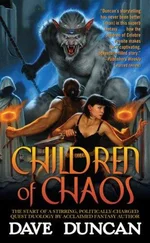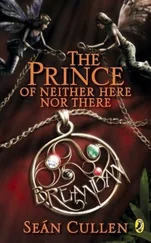His students were grateful for the candor. So many kids in Clement Park that morning would describe how tired they already were of hearing so many people tell them everything would be all right. They knew the truth; they just wanted to hear it.
Mr. D. ended his speech by telling them he loved them. Each and every one of them. They needed to hear that, too.
____
Kids were having trouble with their parents, especially their moms. “It’s kind of hard for me to sit at home,” a boy said. “Like when my mom comes home, I try to stay out of the house.” Lots of other boys nodded; more and more told the same story. Their mothers were so scared, and the fear hadn’t abated when they’d found their kids; now they just wanted to hug them. Hug him/her forever —that was the refrain Tuesday. Wednesday, it was My mom doesn’t understand . Emotionally, their mothers were wildly out of synch. At first, the kids needed the hugs badly; now they needed them to stop.
____
Most of the student body wandered the park, desperate to unload their stories. They needed adults to hear them, and their parents would not do. They found their audience: the press. Students were wary at first, but let their guards down quickly. Reporters seemed so understanding. Clement Park felt like an enormous confessional Wednesday. The kids would regret it.
In the midst of it, a shriek pierced the media camp. Mourners froze, unsure of what to do. More screams: different voices, same direction. Hundreds ran toward them: students, journalists, everyone within hearing range. They found a dozen girls gathered around a single car that remained among the satellite trucks in a small lot on the edge of the park. It was Rachel Scott’s car—the first girl shot dead. Rachel didn’t have an assigned spot, so she had parked half a mile from the school on Tuesday. No one had come to claim the car. Now it was covered front to back with flowers and candles. Messages to Rachel in heaven had been soaped across the windows. Her girlfriends held hands in a semicircle around the back of the car, sobbing uncontrollably. One girl began to sing. Others followed.
____
The Harrises and Klebolds both hired attorneys. They had good reason: the presumption of guilt quickly landed on their shoulders. Investigators didn’t expect to charge them, but the public did. National polls taken shortly after the attack would identify all sorts of culprits contributing to the tragedy: violent movies, video games, Goth culture, lax gun laws, bullies, and Satan. Eric did not make the list. Dylan didn’t either. They were just kids. Something or someone must have led them astray. Wayne and Kathy and Tom and Sue were the chief suspects. They dwarfed all other causes, blamed by 85 percent of the population in a Gallup poll. They had the additional advantage of being alive, to be pursued.
Their attorneys warned them to keep quiet. Neither family spoke to the press. Both released statements on Wednesday. “We cannot begin to convey our overwhelming sense of sorrow for everyone affected by this tragedy,” the Klebolds said. “Our thoughts, prayers and heartfelt apologies go out to the victims, their families, friends and the entire community. Like the rest of the country, we are struggling to understand why this happened, and ask that you please respect our privacy during this painful grieving period.”
The Harrises were more brief: “We want to express our heartfelt sympathy to the families of all the victims and to all the community for this senseless tragedy,” they wrote. “Please say prayers for everyone touched by these terrible events.”
Dylan’s brother stayed home from work for several days. Byron was nearly three years older than Dylan, but because of Dylan’s early enrollment, just two years out of school. He was doing gofer work at an auto dealership: washing cars, shoveling snow, moving inventory around the lot. “It was an entry-level job, but man, he’s good,” a spokesman for the store told the Rocky Mountain News .
His employers understood the need for time away. “It’s shocking for everyone,” the spokesman said. “We’re a family here and we look out for each other. Our hearts go out to Byron. This kid’s great.”
____
Supervisory Special Agent Fuselier’s concern Wednesday morning was the conspiracy. Everyone assumed the Columbine massacre was a conspiracy, including the cops. It was just too big, too bold, and too complex for a couple of kids to have imagined, much less pulled off. This looked like the work of eight or ten people. Every attack of this magnitude spawns conspiracy theories, but this time they appeared sound. The legacy of those theories, and Jeffco’s response to them, would haunt the Columbine recovery in peculiar ways.
Wednesday morning, Fuselier entered the ghastly crime scene. The hallways were scattered with shell casings, spent pipe bombs, and unexploded ordnance. Bullet holes and broken glass were everywhere. The library was soaked in blood; most of the bodies lay under tables. Fuselier had seen carnage, but still, it was awful. The sight that really stunned him was outside, on the sidewalk and the lawn. Danny Rohrbough and Rachel Scott were still out there. No one had even covered them. Years later, he shuddered at the memory.
Fuselier arrived at Columbine as an FBI agent, but he would play a more significant role as a clinical psychologist. Altogether, he had spent three decades in the field; he’d started in private practice, then worked for the air force. A hostage-negotiation course in Okinawa changed his life. He could read people. He could talk them down. In 1981, Fuselier joined the FBI. He took a $5,000-a-year pay cut for a detective job, just to get a shot at the Bureau’s Special Operations and Research Unit (SOARU)—the leading center of hostage-negotiation study in the world.
Agent Fuselier worked his way up through standard casework and discovered he liked detective work, too. He got the assignment at SOARU, finally, and began a new career defusing gun battles. He would handle some of the nation’s worst hostage crises, including the 1987 Atlanta prison siege and the Montana Freemen standoff. He was the FBI’s last hope at Waco, and the final person to talk to David Koresh before the tanks rolled in. Fuselier spent most of his time at SOARU studying prior incidents and analyzing success rates. His team developed the fundamental tactics for hostage standoffs employed today. Fuselier became known for steadiness under pressure, but his heart was weakening, his temples were graying, and eventually he sought a quieter life. He moved his family to Colorado in 1991, and they settled into a tranquil neighborhood in Littleton.
Fuselier would play the leading role in understanding the Columbine killers, but it was luck that drove him to the case. If his son Brian had not been attending that high school, Fuselier would not have even been assigned to the investigation. In fact, it’s unlikely that the FBI would have played a major role. But because Fuselier arrived on the scene, established a rapport with the commanders, and offered federal support, FBI agents would play a major role on the team. Fuselier was one of the senior supervisory agents in the region and already had a relationship with local commanders, so he was placed in command of the FBI team. Before April 20, Fuselier headed up the domestic terrorism unit for the FBI in the region. For the next year, he delegated most of that responsibility. This was more important.
Columbine was the crime of the century in Colorado, and the state assembled the largest team in its history to solve it. Nearly a hundred detectives gathered in Jeffco. More than a dozen agencies loaned out their best minds. The FBI contributed more than a dozen special agents, a remarkable number for a local investigation. Agent Fuselier, one of the senior psychologists in the entire Bureau, headed up the FBI team. Everyone else reported to Jeffco’s Kate Battan, a brilliant detective, whose work unraveling complex white-collar crimes would serve her well. She reported to Division Chief John Kiekbusch, a rising star who had just been promoted to senior command. Kiekbusch and Fuselier each played an active daily role and consulted regularly about the overall progress of the case.
Читать дальше







